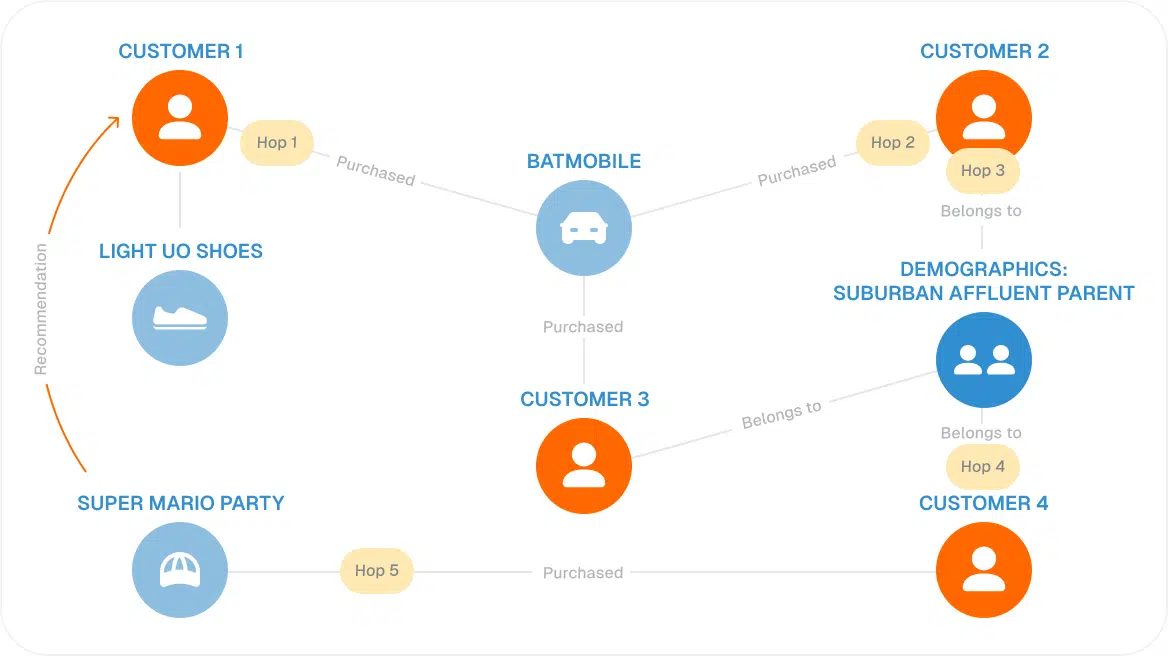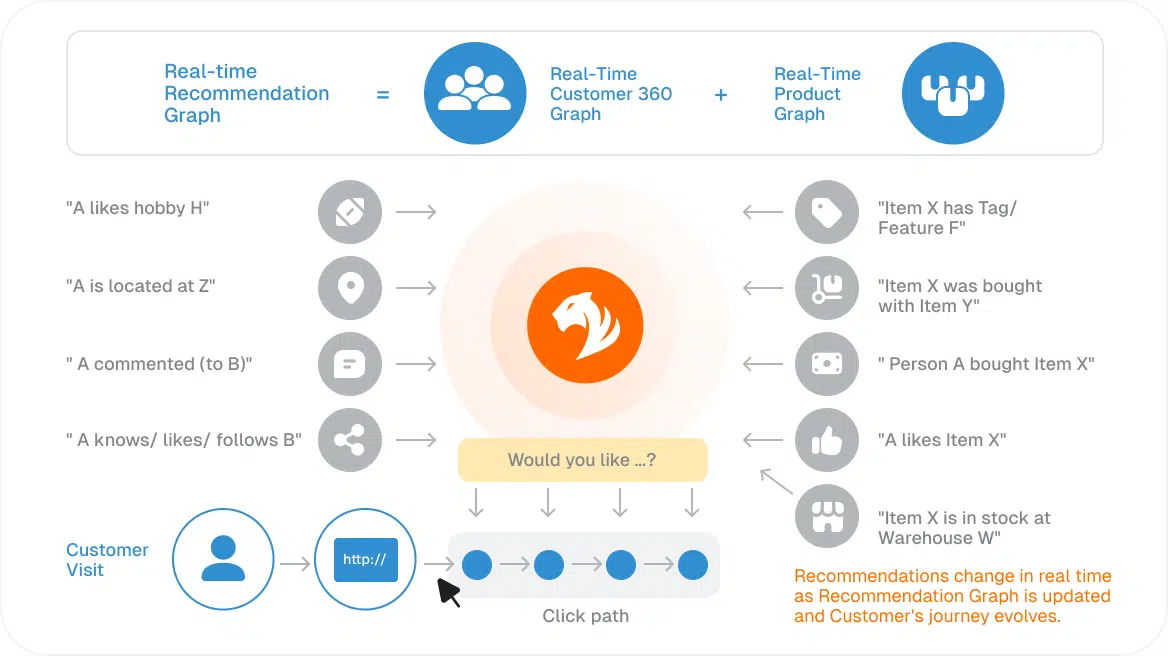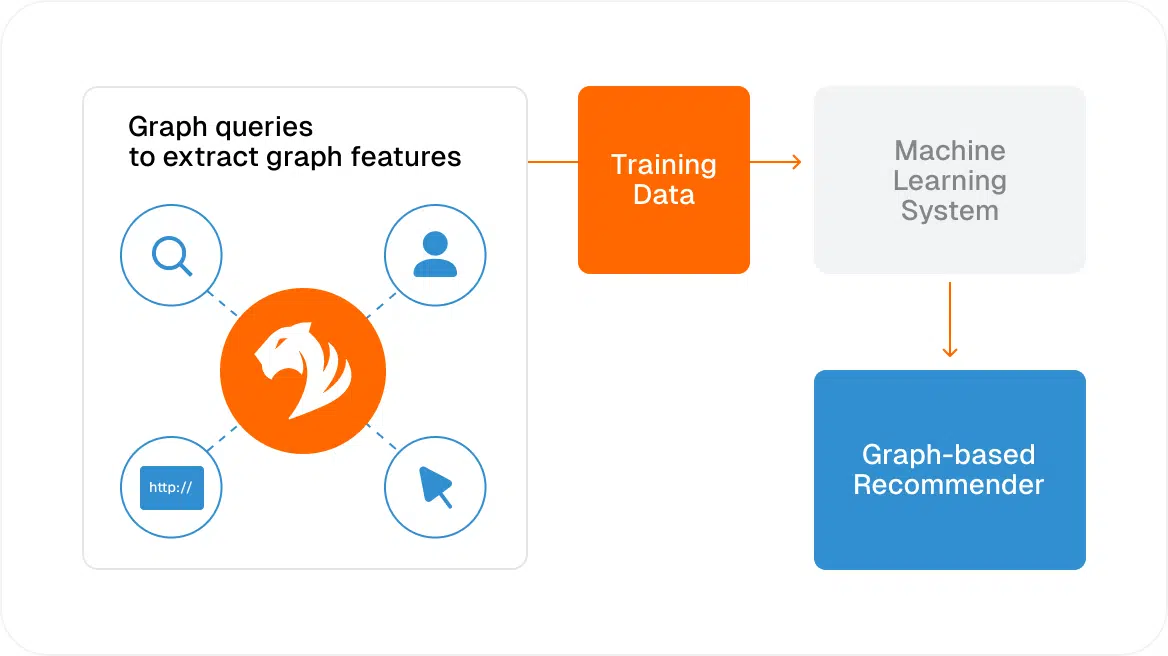

Deliver Personalized Recommendations With TigerGraph
Portion of Amazon’s revenue from cross-sell & up-sell
Per visit spend of a shopper who clicks a recommendation
Size of global recommendation engine market in 2022
Personalized Recommendations Can Significantly Increase Revenues

Legacy Recommendation Systems Are Insufficient for Increasing Revenues


Database for Product + Service Marketing?
Why TigerGraph, a Native Parallel Graph Database, To Build a Real-time Deep Link Recommendation Engine?
Uncovering referral relationships is a lot easier with TigerGraph. Consider the example, where Dr. Douglas Thomas, a general practitioner sees a patient, p1003 on September 8, 2017, for shortness of breath, resulting in the claim c10005. The same patient, p1003 sees Dr. Helen Su, an interventional cardiologist (surgeon) on September 20 for cardiac catheterization (claim c10030) and again on September 23 for the angioplasty operation (claim c10031).
TigerGraph displays all of these claims connected to patients and prescribers in GraphStudio, enabling data analysts to understand the relationship intuitively. TigerGraph also links them based on a time window to deduce referral relationships. In this example, the claims occurring within four weeks are considered for establishing a referral relationship. It takes four hops or steps for traversing from the referring physician, Dr. Douglas Thomas to the referred physician, Dr. Helen Su via relevant claims identifying three common patients, p1003, p1004 and p1005 over the month of August and September. A referral edge or relationship is established between Dr. Douglas Thomas and Dr. Helen Su and the relationship edge carries important information such as the number of patients referred, healthcare condition groups related to the referred patients. The prescription claim data can be added in, to provide specific drugs for cardiac care that are frequently prescribed by both physicians.
Armed with these insights, pharmaceutical companies producing the cardiac care medication and the medical equipment manufacturers producing stents and other products for the cardiac surgery can market those products to Dr. Douglas Thomas and his referral network including Dr. Helen Su in the San Jose area.
Read More
Graph Databases Enable Real-Time Recommendations

Machine Learning Improves the Effectiveness of Personalized Recommendations

